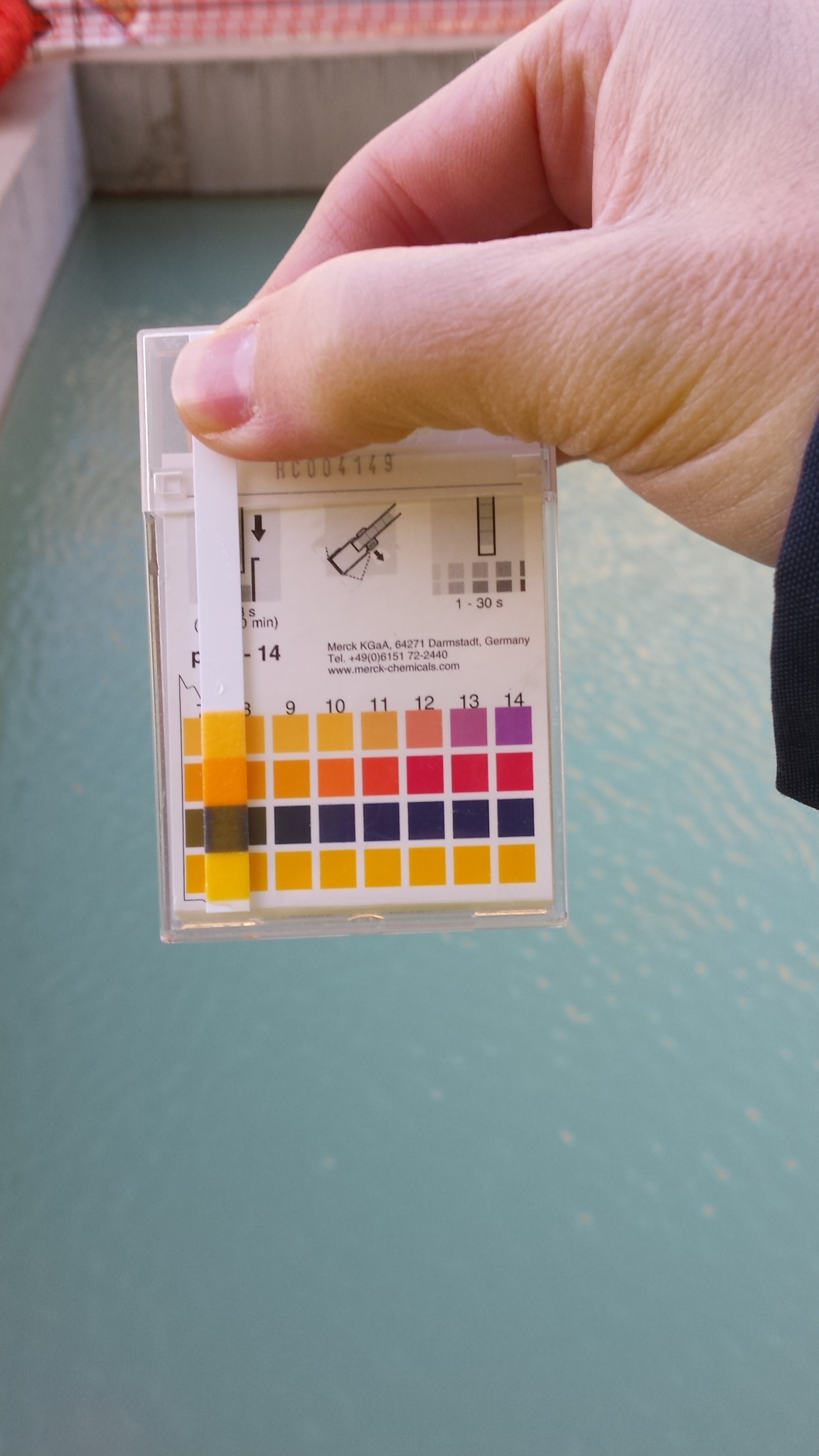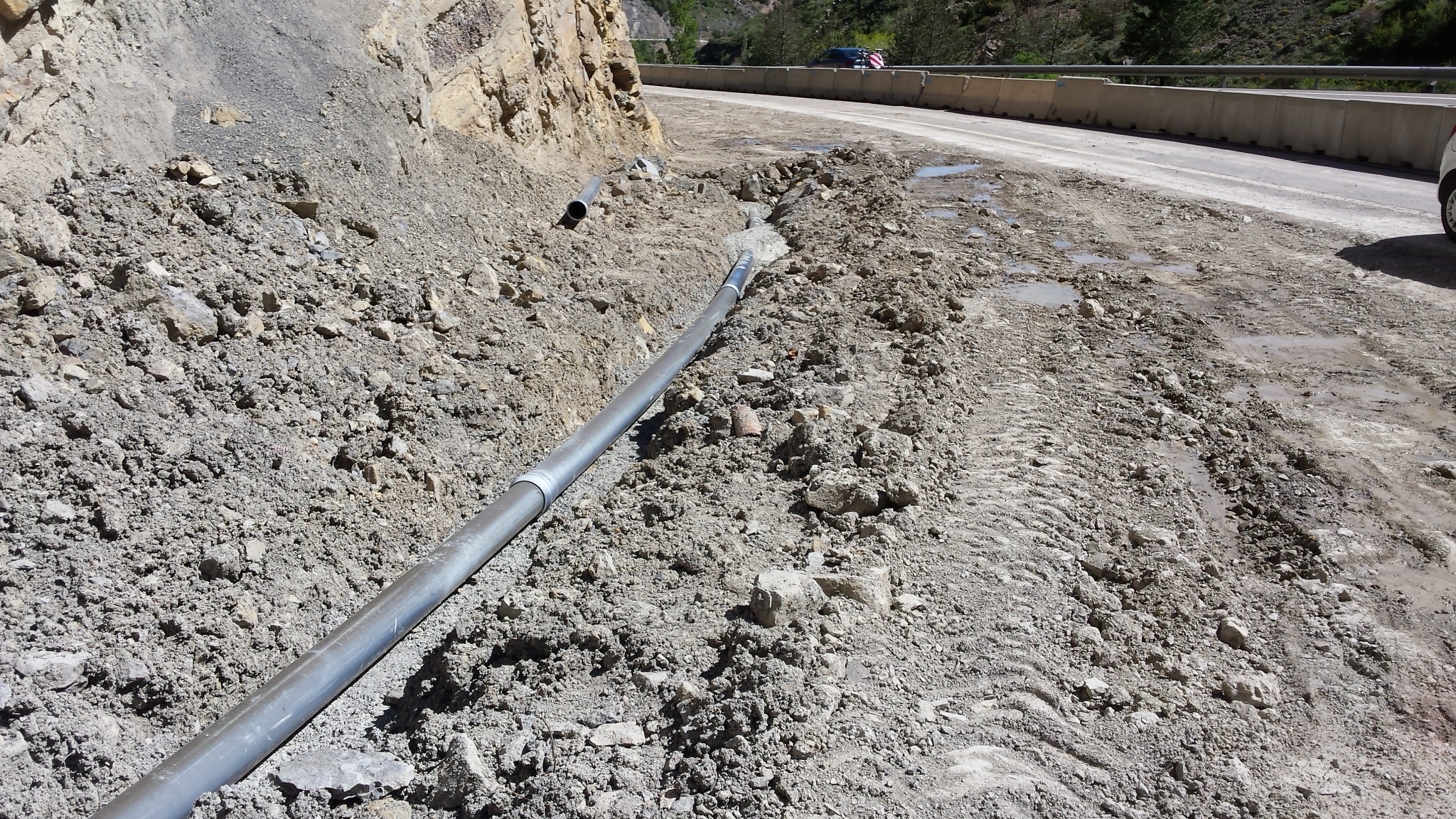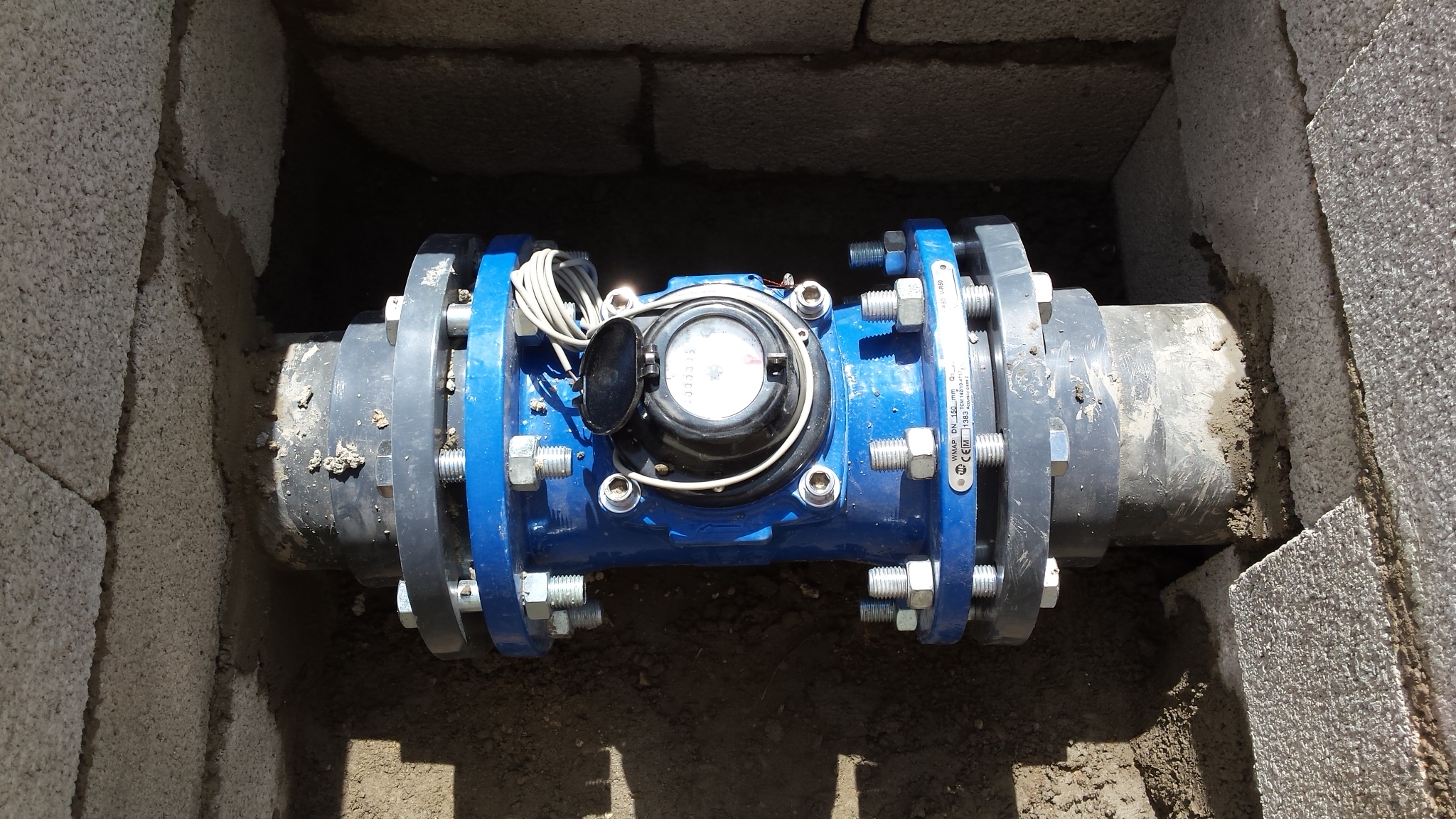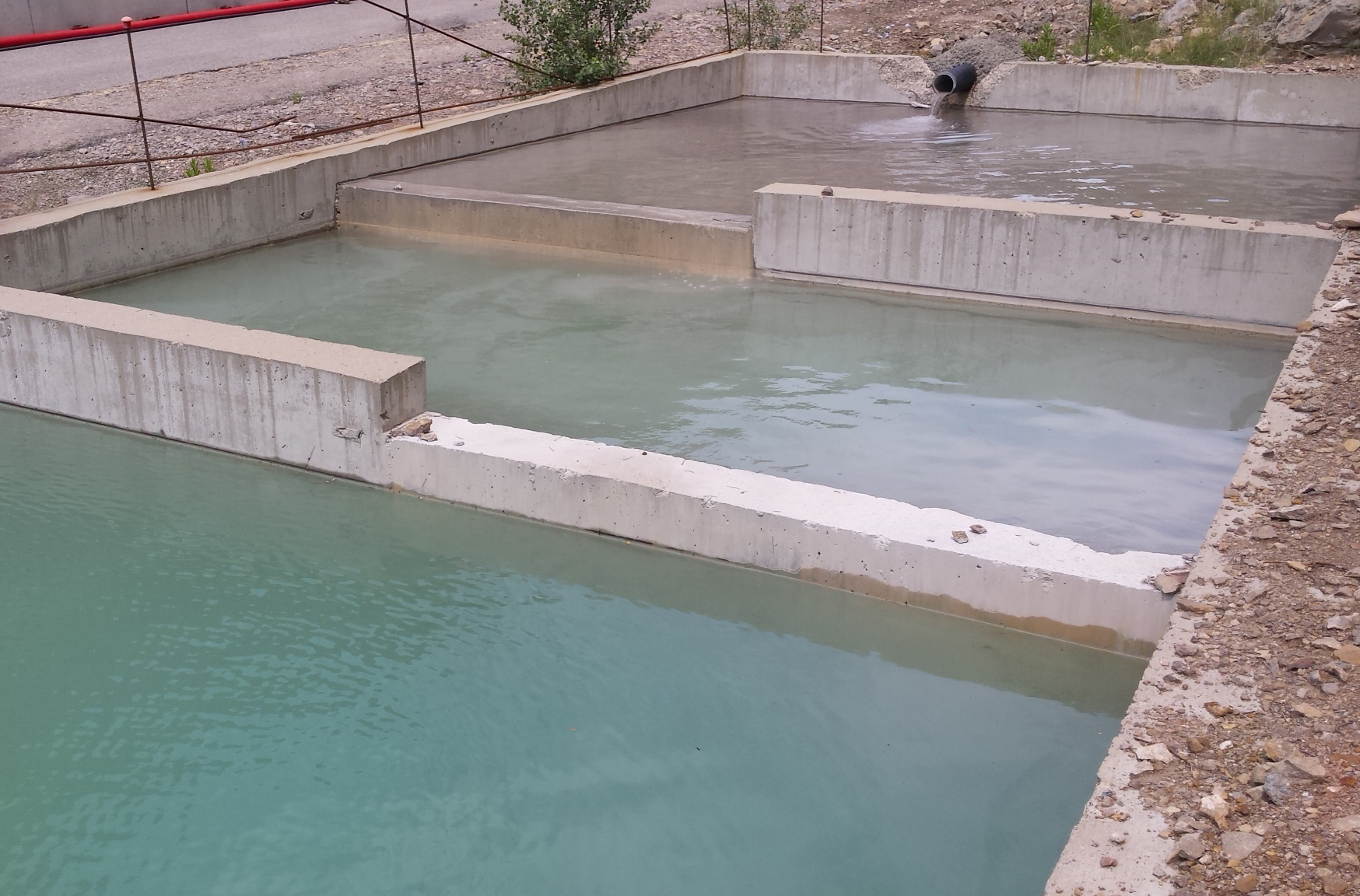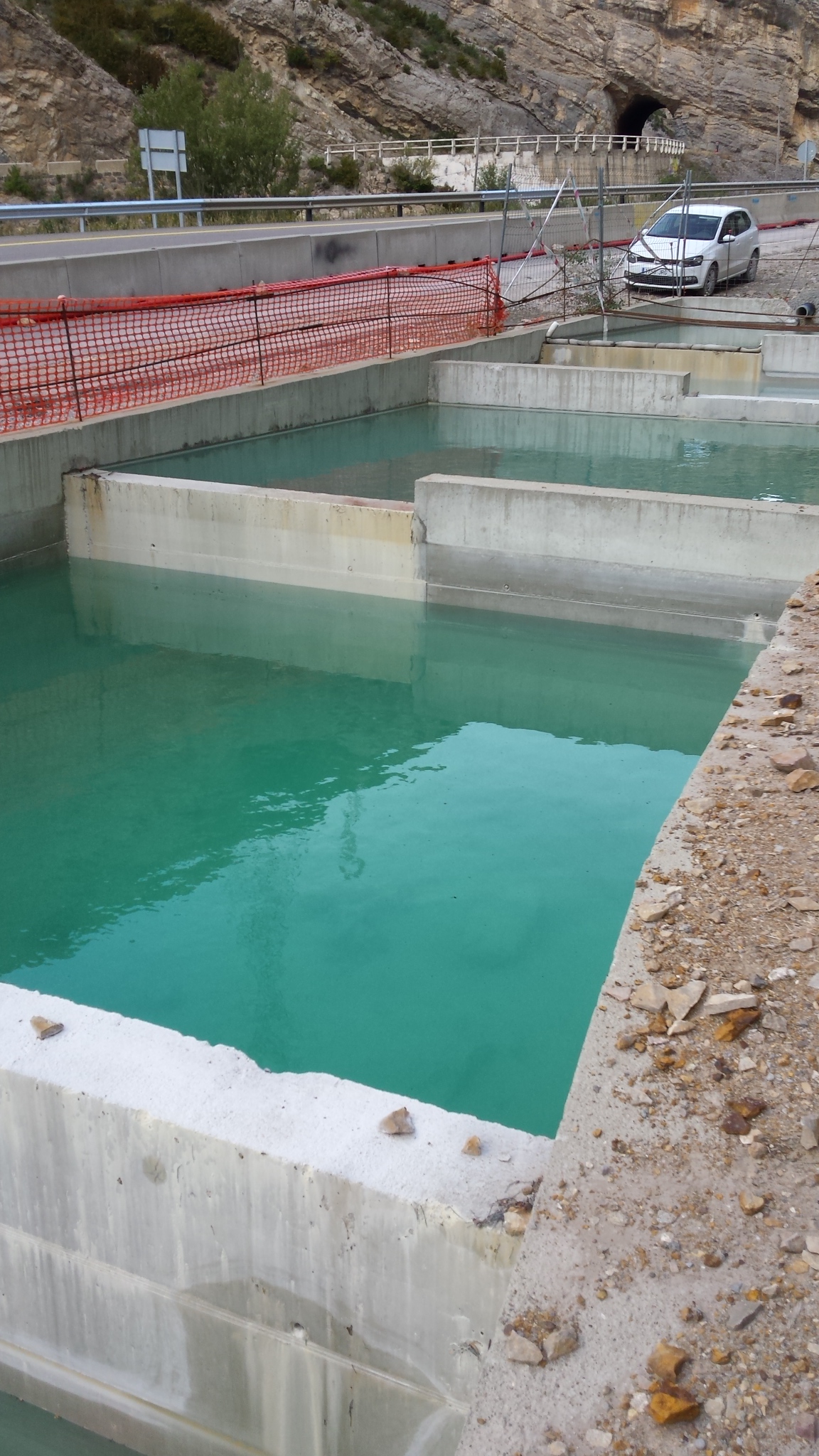A-23 Dual carriageway, between Congosto de Isuela and Arguis
Description of social and environmental performance.
Problem detected:
The construction of the Mudéjar A-23 Dual carriageway,between Congosto del Isuela and Arguis, includes a tunnel measuring approximately 900 m in length. To perform this work, the New Austrian tunnelling method (NATM), also known as the sequential excavation method, was used. The boreholes were drilled before blasting using a wet process, with the subsequent generation of cloudy water discharges inside the tunnel.
Another of the sources of water that had to be controlled as part of these works were the upwelling of water from the rock through which the tunnel was carved, the flow of which increased notably during the rainy season, mixing with solid particles from the shotcrete used to support the excavation of the tunnel.
To this end, there was a discharge of water with a high level of suspended solids and a pH beyond the legal limits, which, had it been discharged directly into the river, would have been harmful to the River Isuela and would have had a huge impact on biodiversity.
Solutions adopted:
In anticipation of the flow of water that would be generated during the works and to reduce its impact on the environment, the efluents discharged during the tunnel construction process was diverted to a series of pools laid out one after another. As part of this system of pools, water was transferred from one to another, gradually depositing the solids, eventually obtaining water with a much smaller volume of suspended solids at the end of the process.
Results:
Using the settling pools, it was possible to decrease the concentration of suspended solids to the levels permitted under the discharge limit allowed. In terms of correcting the pH, in most cases, rainwater, given its low level of acidity, was sufficient to decrease the pH of the settling water. However, when rainwater was not enough to neutralise the pH and, therefore, the limits set out in the permit (pH=9) were not met, hydrochloric acid was added on a one-off basis to achieve the desired value.
To obtain immediate pH data from the pools, test strips were used. This facilitated the comprehensive control of pH before discharging water into the river.
Furthermore, a fortnightly analytical control of physicochemical parameters of the River Isuela itself (the final destination of the discharge) was performed both upstream and downstream, to verify that the discharge was not affecting the ecological quality of the river.









